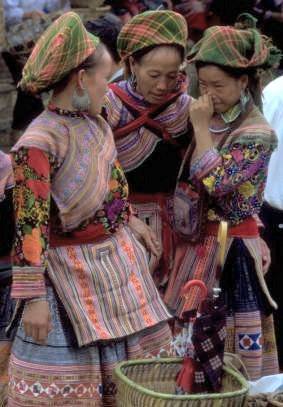 HOME | INFO | -> NEWS <- | DOSSIER| BACHECA / TERMINE |
EDICOLA / KIOSK | LADIN
HOME | INFO | -> NEWS <- | DOSSIER| BACHECA / TERMINE |
EDICOLA / KIOSK | LADINBolzano/Bozen, Göttingen, 7. August 2006
 On all continents the indigenous
communities are increasingly being pushed to the point of their
extinction. This balance has been drawn up by the Society for
Threatened Peoples (GfbV) on the occasion of the International
Day of the Indigenous Peoples - as the United Nations call the
native peoples - which will be celebrated on Wednesday (9th
August). Even in inhospitable areas of retreat, which are often
ecologically sensitive and sometimes also protected, the
indigenous communities are at the mercy of mining and energy
companies, oil concerns or timber companies, which have no other
interest than the ruthless exploitation of the resources on their
land. In the course of this they not only take the irreparable
ruin of the environment in their stride, but also the destruction
of the means of life and so of the culture of the indigenous
communities.
On all continents the indigenous
communities are increasingly being pushed to the point of their
extinction. This balance has been drawn up by the Society for
Threatened Peoples (GfbV) on the occasion of the International
Day of the Indigenous Peoples - as the United Nations call the
native peoples - which will be celebrated on Wednesday (9th
August). Even in inhospitable areas of retreat, which are often
ecologically sensitive and sometimes also protected, the
indigenous communities are at the mercy of mining and energy
companies, oil concerns or timber companies, which have no other
interest than the ruthless exploitation of the resources on their
land. In the course of this they not only take the irreparable
ruin of the environment in their stride, but also the destruction
of the means of life and so of the culture of the indigenous
communities.
The cycle of ruin begins in many countries with the cutting down
of the forests in which many native peoples live. This is
illustrated by the GfbV with many examples in the new 45-page
human rights report on the situation of the indigenous peoples.
The wood from the trees and the mining of mineral oil and natural
gas on the cleared land promise high profits, which cannot be
realised by the sustainable economy of the indigenous people.
Examples of the acute threat from the mining of mineral oil and
natural gas are provided by the Lubicon Lake Cree Indians in
Canada or the Gwich'in in Alaska in the Alaska National Wildlife
Refuge, the Huaorani in Ecuador in the Yasuni National Park,
which has been given the status of world heritage by the UNESCO,
or the indigenous peoples in Siberia. The forests of indigenous
peoples are also being felled for coffee plantations in Vietnam,
for eucalyptus plantations of the cellulose industry in Brazil
and Chile or for the cellulose and plywood production in the
territory of the Sámi in Finland.
In many cases indigenous peoples are exposed to extreme
discrimination like the pygmies in the Central African states, in
which they are seen as "sub-humans" by the dominant majority and
are excluded from adequate medical care and education. Or they
are neglected in emergencies like the isolated inhabitants of
some Andaman Islands on the outbreak of an epidemic of measles or
the Tuareg and Peulh nomads during a drought which lasted a long
time in Niger and Mali. It is not seldom that indigenous people
lose again the rights they have painstakingly worked for. Thus
the conservative government in Australia has abolished the
parastatal self-government of the aborigines and replaced it with
government institutions.
At the international level however the representatives of the
indigenous peoples have been able to win their first victories in
the fight for their rights, reports the GfbV. At all events the
UN Human Rights Council, which replaced the Human Rights
Commission at its first meeting in June 2006, after a decisive
vote with the vote of Germany sent on a Declaration of the Rights
of Indigenous Peoples to be finally passed by the UN plenary
body.
Indigenous peoples are the guardians of the cultural diversity of
the earth. Their wealth consists in the many languages and
cultures, the wisdom of their religions and their dealings with
nature. It is estimated that there are 350 to 400 million people
belonging to about 5,000 indigenous groupings in 75 states. The
9th August was chosen by the United Nations in 1994 as the
International Day of the Indigenous Peoples. Twelve years
previously the UN working party on Indigenous Populations met for
the first time in Geneva on that day and it now meets annually.
Among the native peoples are the approximately 70 million Adivasi
in India, the Sámi in Northern Europe, the Indians in
North, Central and South America, the aborigines in Australia,
the San in Southern Africa and many others.